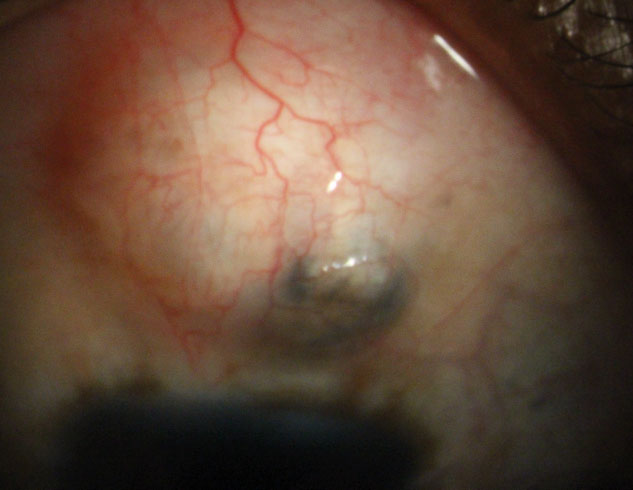 |
Family history of POAG was associated with earlier surgical intervention. Photo: Justin Schweitzer, OD. Click image to enlarge. |
One way to assess the level of risk a patient has for developing an inheritable disease is by measuring their polygenic risk score, which is calculated by the number of inherited risk alleles. In primary open-angle glaucoma (POAG), a highly heritable condition, this value can help predict disease onset or severity. In fact, a recent study observed that POAG patients with high polygenic risk are more likely to receive their first trabeculectomy at a younger age.
Researchers evaluated data from 903 genotyped patients with POAG from various clinics in southern Australia. Ocular surgical history, including age of first trabeculectomy and laterality of trabeculectomy, as well as age of glaucoma diagnosis were recorded. After performing multivariate linear regression analysis, patients were stratified into top decile, intermediate group (10th-89th percentile) and bottom decile based on the correlation between glaucoma polygenic risk score with both age and laterality of trabeculectomy.
They found that, on average, POAG patients in the top decile underwent their first trabeculectomy seven years earlier than patients in the lowest decile. Additionally, compared with those in the lowest decile, patients in the top decile were 1.41-fold more likely to require bilateral trabeculectomy.
In their paper on the study, the researchers concluded, “This report correlated a higher glaucoma polygenic risk score with a younger age at first trabeculectomy, shorter duration between diagnosis and first trabeculectomy and greater need for bilateral trabeculectomy in POAG.”
Marshall HN, Hollitt GL, Wilckens K, et al. High polygenic risk is associated with earlier trabeculectomy in primary open-angle glaucoma. Ophthalmology. July 12, 2022. [Epub ahead of print]. |

